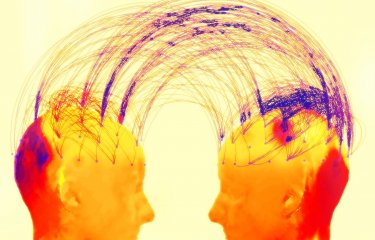How do we recognize pitch? An observational study carried out by the Institut Pasteur with the support of the French Society of Authors, Composers and Publishers of Music (SACEM), involving interviews with nearly 70 musicians (music students and professionals), addressed this question and found some initial answers. Musicians recognize pitch by drawing on three mental sensory modalities (auditory, visual and kinesthetic), both separately and in combination. These varied elements of thought are used by musicians as "mental anchorpoints," a term coined by the scientists, and they differ from one person to the next.
Although great strides have been made in brain research, several questions remain unanswered when it comes to links between the various neuronal activities described, our perception of the outside world and cognition. Broad approaches based on introspective methodology (describing "what goes on in my head") offer precious insights that are all too often neglected these days by psychologists and neuroscientists, who tend to focus more on elucidating the neuronal circuits associated with perceptual and cognitive processes.
"We believe that systemic studies of individual thought may still contribute to a useful and complementary description of the multimodal nature of perception," explains Pierre Legrain from the Institut Pasteur's Perception and Memory Unit, "because they can take into account individual diversity while still identifying the common features of perceptual processes."
A qualitative and quantitative approach
Scientists from the Perception and Memory Unit studied the mental strategies used by musicians to identify the pitch of musical notes, as an example of a conceptual understanding of a perceptual response, in other words the process in which a sound is perceived and recognized and its pitch is verbally associated with the corresponding musical note.
When musicians identify a note, they recognize it even if it is played on different musical instruments. They are therefore clearly performing a complex cognitive task involving perception, extraction of pitch, categorization and verbal correspondence with the correct note.
The scientists opted for a twofold approach combining qualitative analysis of introspection-based interviews with quantitative statistical analysis of the resulting categorization. Their study describes a variety of mental strategies used by the musicians to identify pitch.
Auditory, visual and kinesthetic – multimodal mental strategies to recognize pitch
Interviews with 67 musicians (music students and professionals) revealed that they used intermediate steps when identifying notes by selecting or activating cognitive bricks to help them work towards and reach the correct answer. "We named these elements "mental anchorpoints,"" continues the scientist. Although the mental anchorpoints differ from one individual to the next, they can be grouped into categories associated with the three main sensory modalities – auditory, visual and kinesthetic (perception of movements of the different parts of the body).
"We describe "mental anchorpoints" in musicians as intermediate stages in the process of note identification. And we found that musicians can be categorized according to their use of the three main sensory modalities – auditory, visual and kinesthetic – which are activated both separately and in combination."
This finding illustrates the multimodal nature of perception and reveals the diversity of individuals, while identifying common features of the perceptual process that leads to note identification. The scientists hope that their approach will inspire future functional neuroimaging research on the identification of key stages and corresponding neural networks involved in the recognition and understanding of both auditory stimuli and all perceptual phenomena.
This research was supported and partly funded by the French Society of Authors, Composers and Publishers of Music (SACEM).
This research was supported and partly funded by the French Society of Authors,
Composers and Publishers of Music (SACEM).
Source
Stratégies utilisées par les musiciens pour identifier la hauteur des notes : briques cognitives et représentations mentales, Frontiers in psychology, July 7, 2020
Alain Letailleur1, Erica Bisesi2, 3 #, Pierre Legrain2, 3 *
1 CNRS UMR8131, Georg Simmel Franco-German Social Sciences Center, EHESS, France
2 CNRS UMR3571, France
3 Institut Pasteur, Perception and Memory Unit, France
* Correspondence: Pierre Legrain - pierre.legrain@pasteur.fr
# Current address: Faculty of Music, University of Montreal, Canada
This study is part of the priority scientific area Brain connectivity and neurodegenerative diseases of the Institut Pasteur's strategic plan for 2019-2023.









